While browsing recipes online, the carrot holige recipe using wheat flour catches the eye. “Usually holige is made with maida to give the dough the required elasticity to roll it out, says Latha Holla, of vegrecipesofkarnataka.com. Repeated requests for a healthier option saw Latha create the wheat flour variant. “It was an instant hit.”
Latha has nearly a thousand traditional recipes from Karnataka on her website, most of which can also be viewed on her YouTube channel.
Born in Jayapura town near Shringeri (Chikkamagalur district) to Anandarama Aithal and Shantha Aithal, her family can trace their roots to Ujire (near Dharmastala) and Kundapura. Latha came to Bengaluru in 2001 to study Electronics and later worked in various firms. She quit her day job as a design engineer in an electronic equipment R&D company in 2011 to pursue her passion for culinary art.
Latha Holla
| Photo Credit:
Special Arrangement
“My husband Raghavendra Holla is a medical professional whose work took us to different cities including Cochin, Hyderabad and Pune,” says Latha. “With my family expanding I found it easier to resign my job and follow my passion, although it required some effort to understand gastronomy.”
The website was Latha’s way of chronicling all she had learnt about the dishes she had enjoyed over the years. “My interest in familiarising myself with the recipes of Karnataka ended being stowed away in books after I tried them out in the kitchen. A website to document those dishes seemed the logical next step.”
Her collection of recipes is a journey that goes back more than a hundred years of recipes shared by her grandmothers, mother and aunts, from various regions of Karnataka. “Documenting family recipes wasn’t just a responsibility, but something I loved. I wanted to expand this effort to include dishes from my home state Karnataka. During my years of study and work, I understood the nuances of region-specific tastes, courtesy of the many people I met,” says Latha.
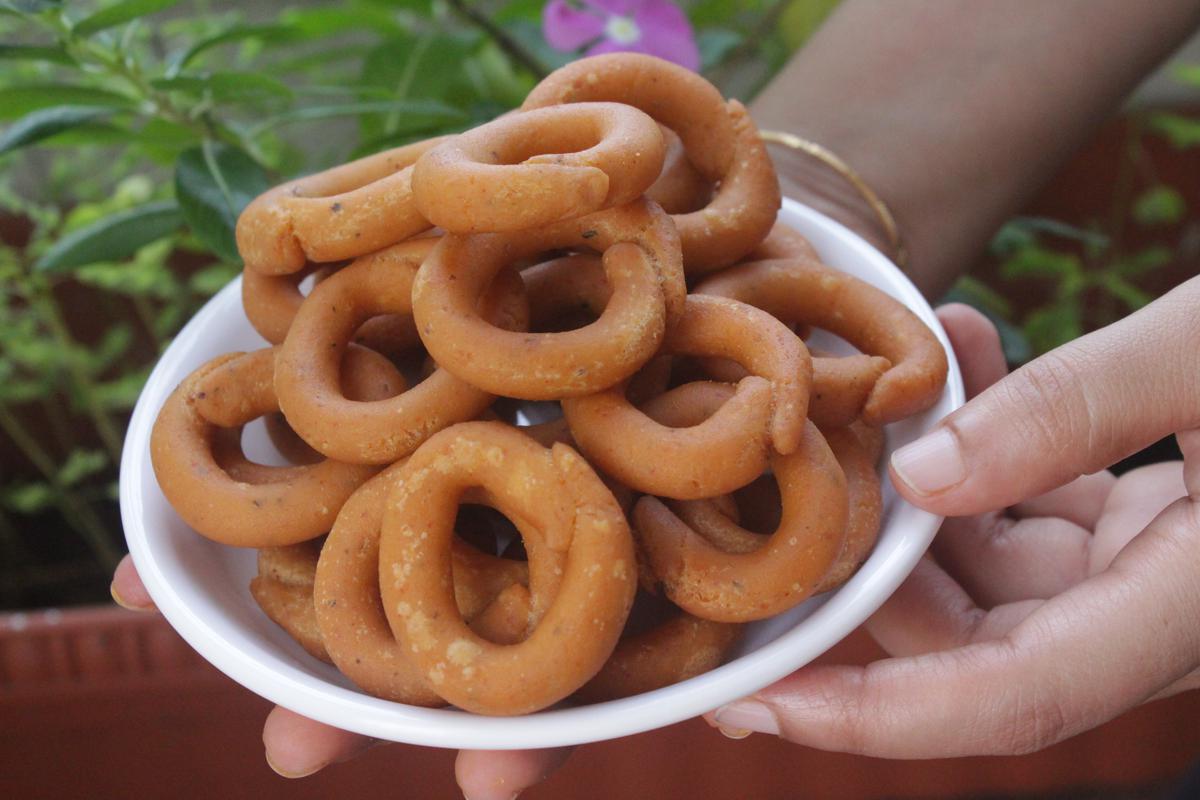
Kodubale from Latha Holla’s site
| Photo Credit:
Special Arrangement
“The more I saw people proudly documenting their own cuisine, the more I was convinced to put up a site for recipes from Karnataka,” says Latha, who began vegrecipesofkarnataka.com in 2015
Ranganna, the cook at the PG hostel Latha was staying when she was studying in Bengaluru made the best tomato baath, huliyanna (tamarind rice) and coconut rice, according to Latha. “Today, there are three variants of tomato baath on the site — one without onion and garlic, Ranganna’s version with garlic, and my creation with onion-ginger and tomato puree.” Most of her recipes come with a minimum of three to four variations, tuned to regional specifications in Karnataka, says Latha.
When Latha worked at L&T in Mysore at the JSS Women’s Hostel, her exposure to ragi mudde (ragi ball) and molake-kaal sambar (sprouted bean sambar), khara pongal, bisibele-baath, masale dose and poori variants of this region was an eye opener. “Visiting my friends at Mysuru, Hassan, Kolar, Tiptur, Ballary, Hospete, introduced me to bassaru, uppsaru, vaangibath and rave unde. Badnekaay yennagaai (a brinjal preparation) in Mysuru is quite different from the North Karnataka variant with hucchellu (niger seeds). Every dish has a twist according to where it is prepared, even the gramflour jhunka of North Karnataka has three variants.”
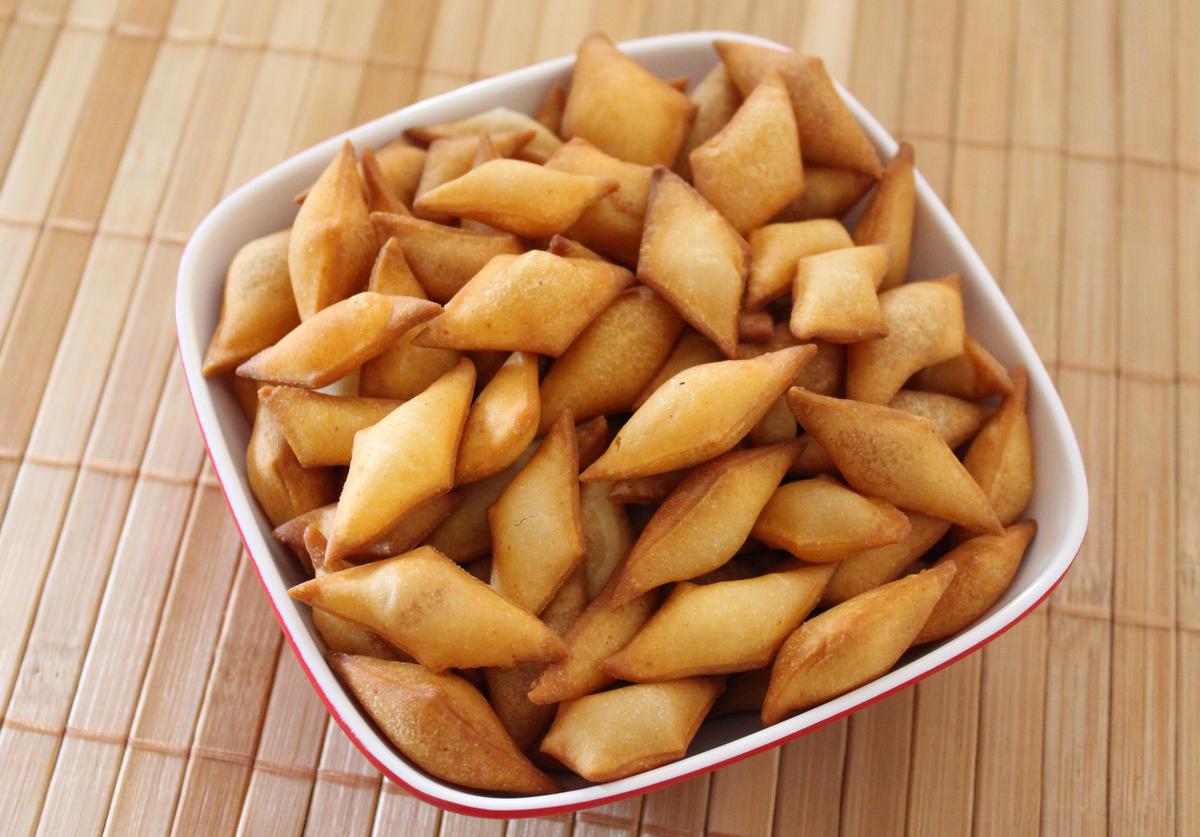
Shakar poli from Latha Holla’s site
| Photo Credit:
Special Arrangement
Latha’s aunt from Malnad taught her to make different types of vegetable pulav, chapati, goli baje (Mangalore bonda), shankara pali and cabbage baath. “It was she who also exposed me to mouth-watering teatime snacks such as chattaambode (a variant of masale vade) and kadalekaal usli,” she says. “Panchakajjaya with channa daal, jaggery, coconut, sesame or cashew and ghee is another speciality.”
Signature recipes from Latha’s family include Haal baayi — a rice-jaggery-coconut cake; chakli made with rice and urad dal, kodbale, and the sweet, mini, steamed rice balls seke undlaka.
For Latha it was a dream come true to see her website gain traction soon after its launch. “People were going through not only my family’s recipes, but also those which had my personal tweaks such as kesari baath and badaam puri,” says Latha.
Vegrecipesofkarnataka.com grew steadily also for its categories that included dishes for festivals, bachelors, sweets, savouries and dishes with medicinal value that include ingredients such as oregano, mint, curry leaves and spinach.
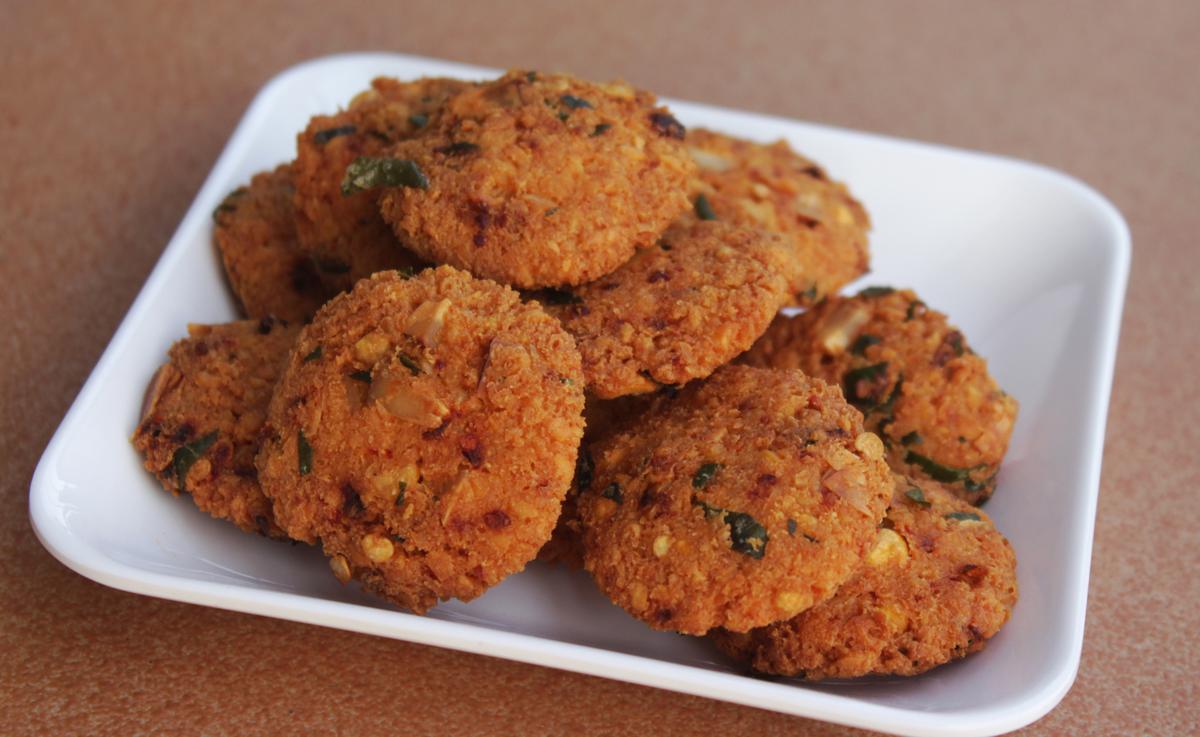
Ambode from Latha Holla’s site
| Photo Credit:
Special Arrangement
Differentiating between obbattu and holige, Latha says, “Obbattu is flattened with your hands and is slightly thick, while holige is flattened with a rolling pin on banana leaf or holige sheet and is therefore flatter.”
Latha remembers how her grandfather Vasudeva Holla, from Ujire would make sweets and savouries by the hundreds during religious functions. “With Karnataka’s rich legacy in food history and favourites such as bisibele baath, rava idli, Mysore paak and haal baayi on its list of creations, I could easily add 2,000 recipes to the site. I look forward to continuing this journey of preserving our food heritage.”
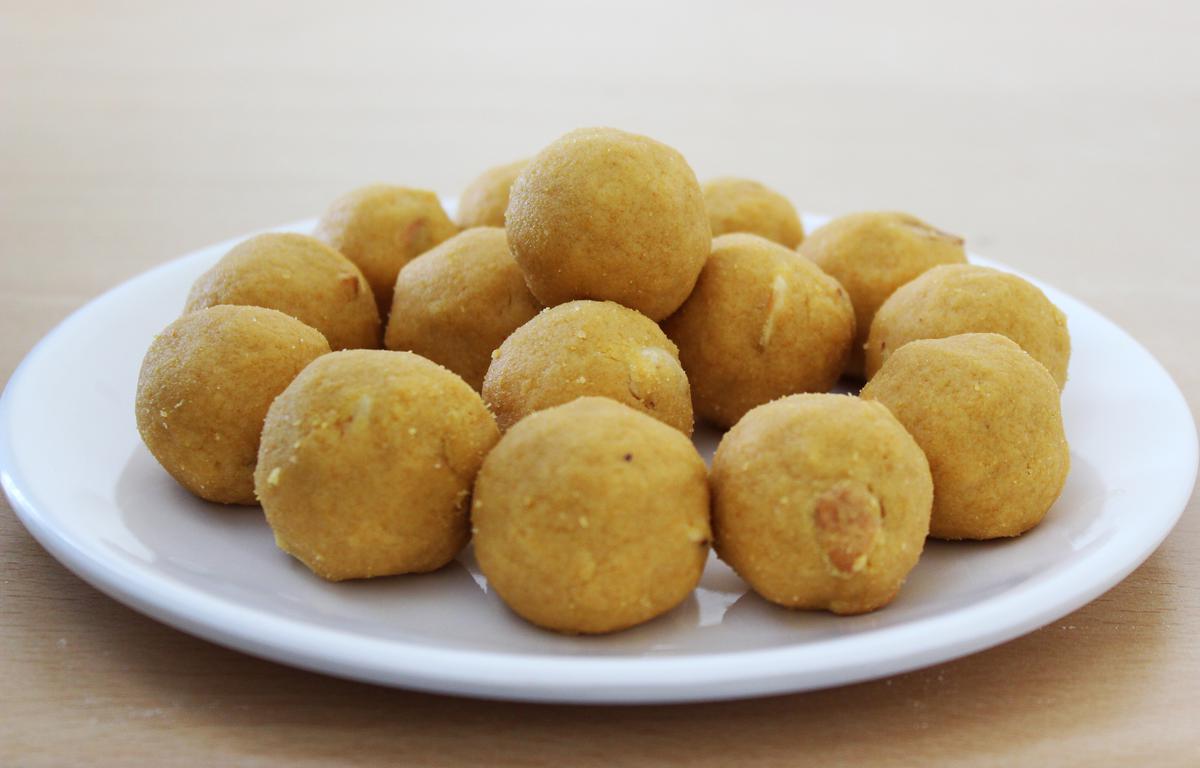
Hesaru bele unde from Latha Holla’s site
| Photo Credit:
Special Arrangement
Carrot holige
To prepare the kanaka (dough): Take a cup of wheat flour with a pinch of salt in a bowl. Knead it into a slighter softer consistency than chapati dough with required water. Add a few spoons of oil and keep it aside for half an hour.
To prepare the sweet hoorana (stuffing): Heat a tsp of ghee in a pan. Add in a cup of grated carrot, 1/4 cup finely grated coconut and 1/2 cup of powdered jaggery. Stir it until the extra moisture disappears. Switch off the stove and wait until warm.
To prepare the holige: Stuff a lime-sized portion of hoorana inside the flattened kanaka, cover it, and roll it out. Use flour when required to keep it from sticking. Carefully remove it with both hands, cook it on the tava on both sides using ghee.
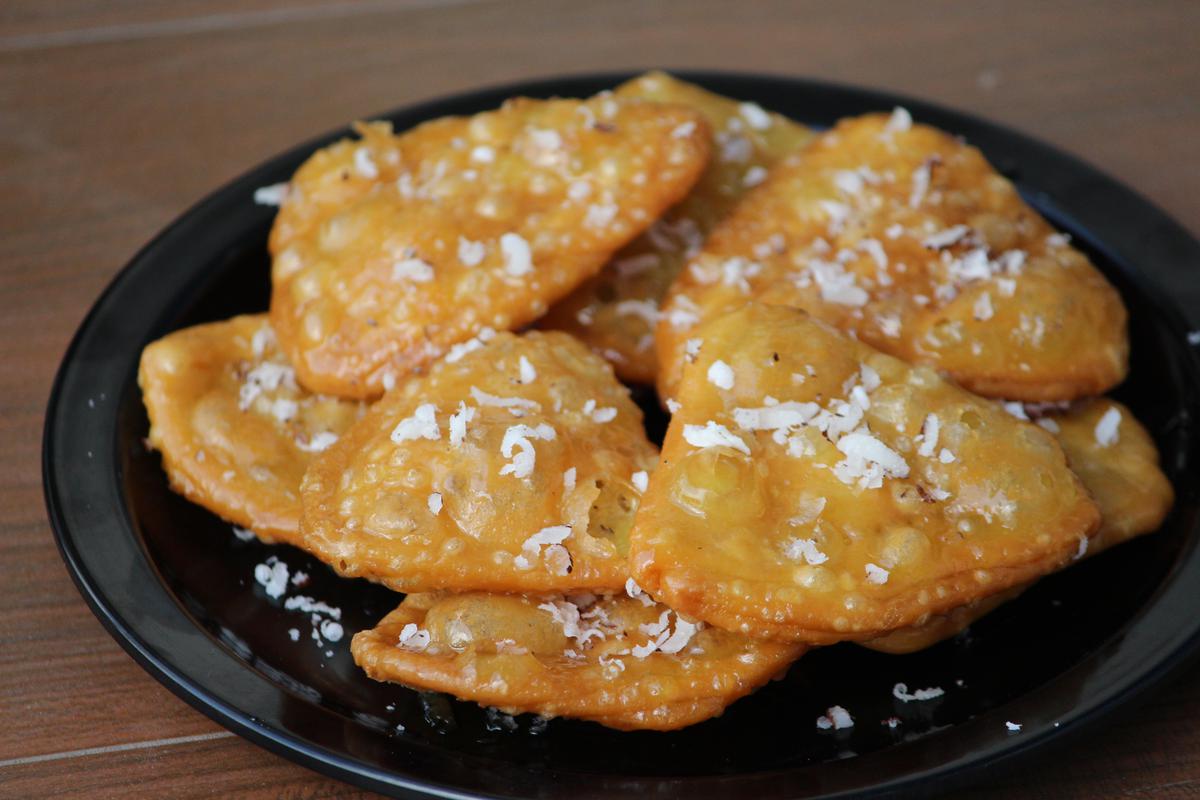
Badam puri from Latha Holla’s site
| Photo Credit:
Special Arrangement